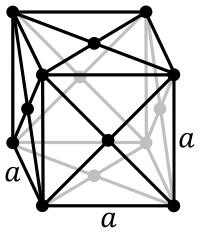
Photo from wikipedia
Scalable coating methods have recently emerged as practical alternative deposition techniques to the conventional spin-coating despite their lower yielding power conversion efficiencies (PCEs). The most important barrier acting against the… Click to show full abstract
Scalable coating methods have recently emerged as practical alternative deposition techniques to the conventional spin-coating despite their lower yielding power conversion efficiencies (PCEs). The most important barrier acting against the use of scalable deposition methods to get a highly absorbing (>95%) film with controlled morphology in the high crystallinity of perovskite particles is the impossibility of antisolvent dripping during the deposition. Here, we demonstrate the positive role of both the surfactant-engineering and the vacuum-annealing (<100 Pa) process in improving the device performance to overcome this limit. A detailed optimization of the vacuum-assisted meniscus printing parameters is discussed to get a pinhole-free triple-cation mixed-halide perovskite layer with high crystallinity. In particular, the results showed that with the increase in surface coverage, wettability and perovskite crystallinity were achieved by adding Triton X-100 (12.5 mM) as a surfactant into the precursor solu...
Journal Title: ACS Applied Energy Materials
Year Published: 2019
Link to full text (if available)
Share on Social Media: Sign Up to like & get
recommendations!